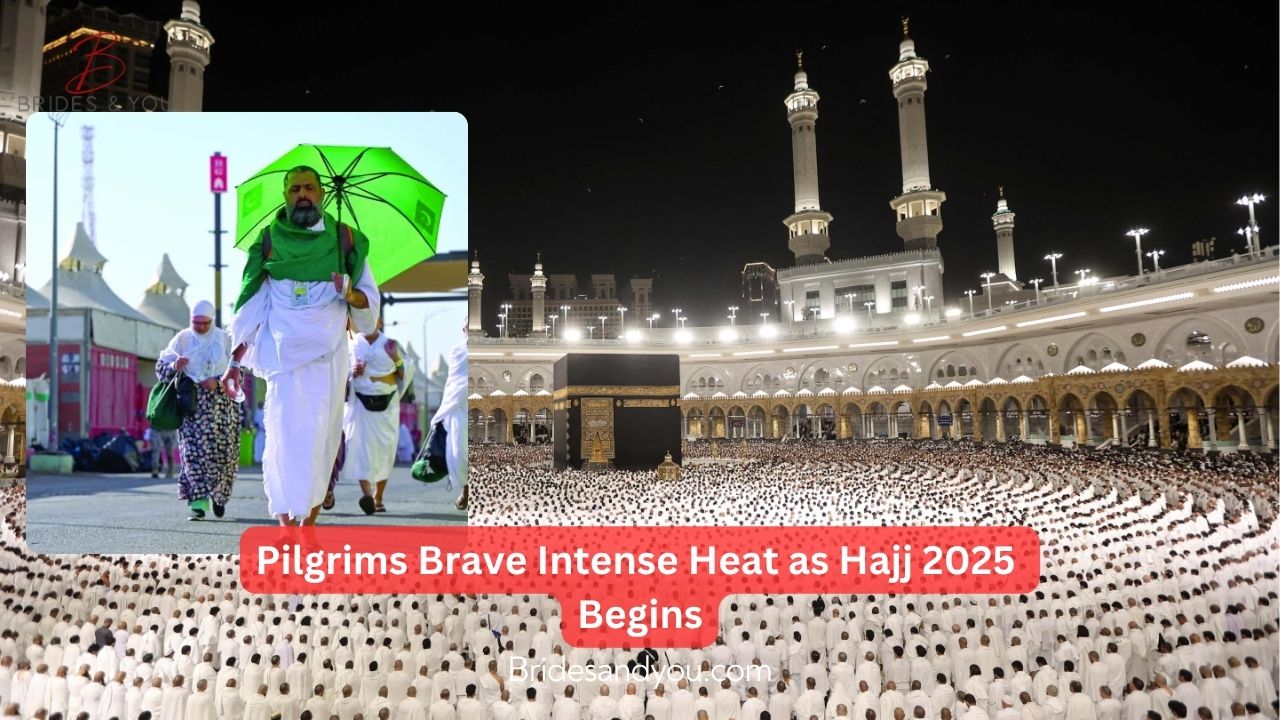The Haj 2025 pilgrimage has commenced with over 1.4 million pilgrims arriving in Makkah and its neighboring tent city of Mina, braving scorching heat as they embark on one of the most significant spiritual journeys in Islam. With the temperature soaring and memories of last year’s heatwave tragedy still fresh, Saudi authorities have significantly ramped up safety measures, combining tradition with cutting-edge technology.
Mina: The Temporary Tent City Welcomes Pilgrims
The city of Mina, located on the outskirts of Makkah, becomes the world’s largest temporary accommodation every year. As pilgrims arrive for an overnight stay, staff greeted them warmly with traditional Arabic coffee and dates, embracing the sacred hospitality associated with Haj.
Mina serves as a crucial stop before the main ritual on Mount Arafat, where the Holy Prophet Muhammad (peace be upon him) delivered his final sermon. The massive influx began on Tuesday, with pilgrims preparing for a deeply spiritual and physically demanding journey ahead.
Mount Arafat: The Heart of the Haj Rituals
On Thursday, pilgrims will gather at Mount Arafat, marking the spiritual peak of the Haj 2025 pilgrimage. This momentous day involves collective prayers and deep reflection, symbolizing unity, submission, and spiritual renewal. It is the most spiritually intense day of Haj, and pilgrims spend hours in supplication, seeking mercy and forgiveness.
Saudi Arabia Intensifies Heat Protection Efforts
With temperatures exceeding 50°C, Saudi authorities are leaving no stone unturned to ensure pilgrims’ safety during the Haj 2025 pilgrimage. The government has mobilized more than 250,000 officials across 40 agencies to provide comprehensive support. Key measures include:
- Expanding shaded areas by 50,000 square meters
- Deploying over 400 cooling units
- Increasing medical personnel on standby
- Offering water, shaded rest areas, and health awareness booths
These improvements are in direct response to last year’s tragedy where 1,301 pilgrims lost their lives due to heat-related complications.
Artificial Intelligence in Haj Management
In a remarkable move, Saudi Arabia has integrated AI-powered technologies into the management of the Haj 2025 pilgrimage. These systems are designed to:
- Monitor real-time crowd flow
- Predict and prevent bottlenecks
- Analyze data from over 15,000 surveillance cameras
- Operate drones for aerial traffic monitoring
- Guide more than 20,000 buses shuttling pilgrims
AI is now a vital tool in averting tragedies and ensuring the smooth operation of one of the world’s largest annual gatherings.
Crowd Control & Permits: Managing the Masses
Haj permits are distributed based on country quotas via a lottery system. However, due to high costs, many attempt to perform Haj without official permits, risking detention or deportation. While the desire to complete this sacred obligation is understandable, the Saudi government reiterates the importance of compliance to maintain safety.
The government’s strict regulations are in place to avoid incidents like the 2015 Mina stampede that resulted in over 2,300 fatalities during the “stoning the devil” ritual. Crowd density is a serious concern, and it’s being mitigated through advanced tech and disciplined logistics.
The Economic and Spiritual Impact of Haj
Haj and Umrah generate billions of dollars for Saudi Arabia annually. However, beyond economics, Haj represents the pinnacle of a Muslim’s faith journey. From Tawaf around the Kaaba to the symbolic stoning of the devil, each step carries immense meaning, rooted in centuries of Islamic tradition.
Conclusion
The Haj 2025 pilgrimage is a testament to faith, endurance, and unity under testing conditions. With more than a million pilgrims navigating extreme heat and vast distances, Saudi Arabia’s efforts to combine tradition with technology are commendable. As the rituals progress, prayers for safety, spiritual fulfillment, and peace echo across the desert — connecting millions of hearts worldwide.

